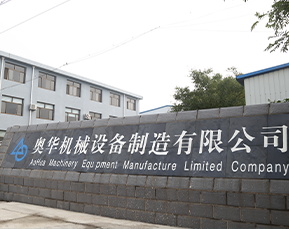 Afrikaans
Afrikaans  Albanian
Albanian  Amharic
Amharic  Arabic
Arabic  Armenian
Armenian  Azerbaijani
Azerbaijani  Basque
Basque  Belarusian
Belarusian  Bengali
Bengali  Bosnian
Bosnian  Bulgarian
Bulgarian  Catalan
Catalan  Cebuano
Cebuano  Corsican
Corsican  Croatian
Croatian  Czech
Czech  Danish
Danish  Dutch
Dutch  English
English  Esperanto
Esperanto  Estonian
Estonian  Finnish
Finnish  French
French  Frisian
Frisian  Galician
Galician  Georgian
Georgian  German
German  Greek
Greek  Gujarati
Gujarati  Haitian Creole
Haitian Creole  hausa
hausa  hawaiian
hawaiian  Hebrew
Hebrew  Hindi
Hindi  Miao
Miao  Hungarian
Hungarian  Icelandic
Icelandic  igbo
igbo  Indonesian
Indonesian  irish
irish  Italian
Italian  Japanese
Japanese  Javanese
Javanese  Kannada
Kannada  kazakh
kazakh  Khmer
Khmer  Rwandese
Rwandese  Korean
Korean  Kurdish
Kurdish  Kyrgyz
Kyrgyz  Lao
Lao  Latin
Latin  Latvian
Latvian  Lithuanian
Lithuanian  Luxembourgish
Luxembourgish  Macedonian
Macedonian  Malgashi
Malgashi  Malay
Malay  Malayalam
Malayalam  Maltese
Maltese  Maori
Maori  Marathi
Marathi  Mongolian
Mongolian  Myanmar
Myanmar  Nepali
Nepali  Norwegian
Norwegian  Norwegian
Norwegian  Occitan
Occitan  Pashto
Pashto  Persian
Persian  Polish
Polish  Portuguese
Portuguese  Punjabi
Punjabi  Romanian
Romanian  Russian
Russian  Samoan
Samoan  Scottish Gaelic
Scottish Gaelic  Serbian
Serbian  Sesotho
Sesotho  Shona
Shona  Sindhi
Sindhi  Sinhala
Sinhala  Slovak
Slovak  Slovenian
Slovenian  Somali
Somali  Spanish
Spanish  Sundanese
Sundanese  Swahili
Swahili  Swedish
Swedish  Tagalog
Tagalog  Tajik
Tajik  Tamil
Tamil  Tatar
Tatar  Telugu
Telugu  Thai
Thai  Turkish
Turkish  Turkmen
Turkmen  Ukrainian
Ukrainian  Urdu
Urdu  Uighur
Uighur  Uzbek
Uzbek  Vietnamese
Vietnamese  Welsh
Welsh  Bantu
Bantu  Yiddish
Yiddish  Yoruba
Yoruba  Zulu
Zulu Different Types of Pulleys Used in Belt Conveyor Systems
Types of Pulleys in Belt Conveyors
Belt conveyors are essential in various industries for transporting materials efficiently over long distances. A crucial component of these systems is the pulleys, which play a key role in the movement and direction of the conveyor belt. Understanding the different types of pulleys used in belt conveyors is vital for optimizing performance and ensuring longevity.
1. Drive Pulleys
Drive pulleys are central to the operation of belt conveyors. They are powered by an electric motor and are responsible for pulling the belt forward. The drive pulley is typically located at the loading end of the conveyor, where materials are introduced. These pulleys can come in different configurations, including lagged and crowned designs. Lagging enhances the traction between the belt and pulley, reducing slippage, especially in heavy-load applications.
2. Idler Pulleys
Idler pulleys, also known as return pulleys, are essential for supporting the conveyor belt and maintaining its tension. These pulleys do not receive any drive power; instead, they help guide and hold the belt in place during its operation. Idler pulleys are strategically positioned along the length of the conveyor system and can be adjustable to ensure proper tension across the belt. There are various types of idler pulleys, including flat, troughing, and impact idlers, each designed for specific applications to minimize wear and tear on the belt.
3. Tail Pulleys
types of pulleys in belt conveyor

Located at the end of the conveyor system, tail pulleys help in returning the belt back to its starting position. They are often designed to be non-powered and can be fitted with a rubber lagging to improve traction. Proper selection and maintenance of tail pulleys are critical to ensure that the belt remains tensioned and prevents unnecessary sagging, which can lead to operational inefficiencies.
4. Snub Pulleys
Snub pulleys are used to increase the wrap angle of the belt around the drive pulley, enhancing friction and improving drive efficiency. By increasing the contact area, snub pulleys help in optimizing the power transfer from the drive to the belt. These pulleys are particularly useful in applications where overcoming resistance is necessary, such as inclines or heavy-load scenarios.
5. Bend Pulleys
Bend pulleys are used to change the direction of the conveyor belt, allowing for horizontal or vertical turns in the system. They play a significant role in ensuring that the belt follows the intended path without slipping or misalignment.
Conclusion
Understanding the various types of pulleys in belt conveyors is essential for designing efficient material handling systems. By selecting the right pulleys for specific applications, businesses can enhance the performance and longevity of their conveyor systems, leading to more reliable operations and reduced maintenance costs.
-
Revolutionizing Conveyor Reliability with Advanced Rubber Lagging PulleysNewsJul.22,2025
-
Powering Precision and Durability with Expert Manufacturers of Conveyor ComponentsNewsJul.22,2025
-
Optimizing Conveyor Systems with Advanced Conveyor AccessoriesNewsJul.22,2025
-
Maximize Conveyor Efficiency with Quality Conveyor Idler PulleysNewsJul.22,2025
-
Future-Proof Your Conveyor System with High-Performance Polyurethane RollerNewsJul.22,2025
-
Driving Efficiency Forward with Quality Idlers and RollersNewsJul.22,2025





























